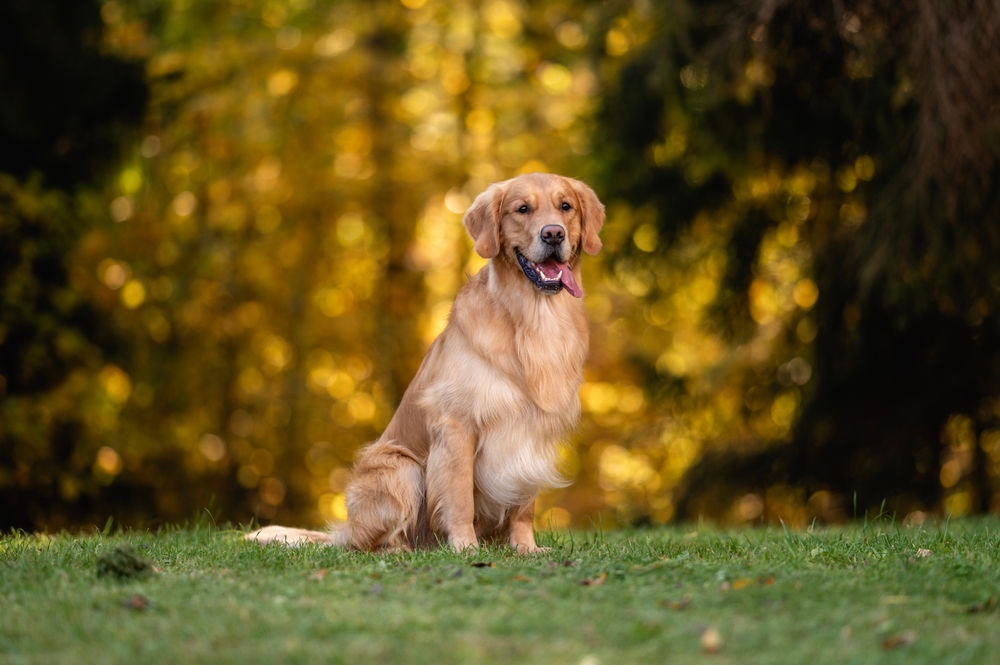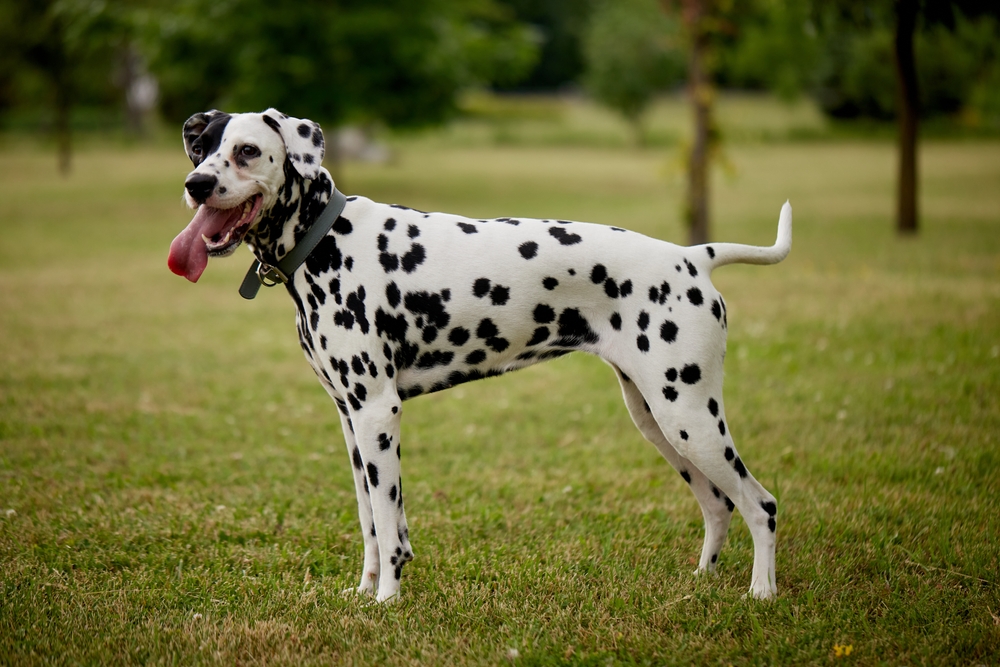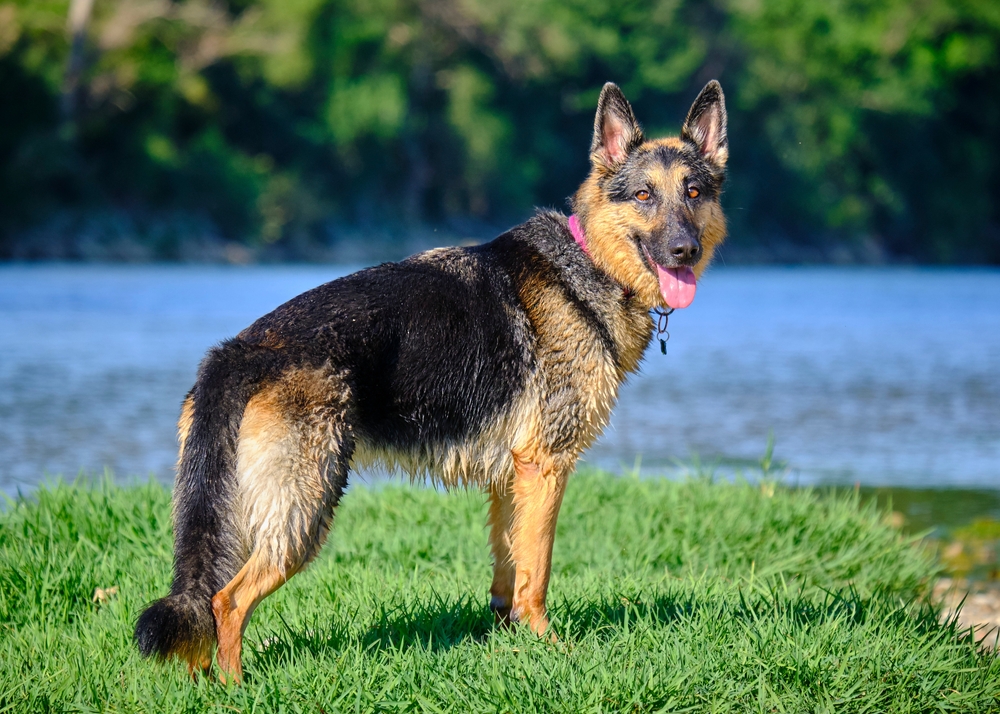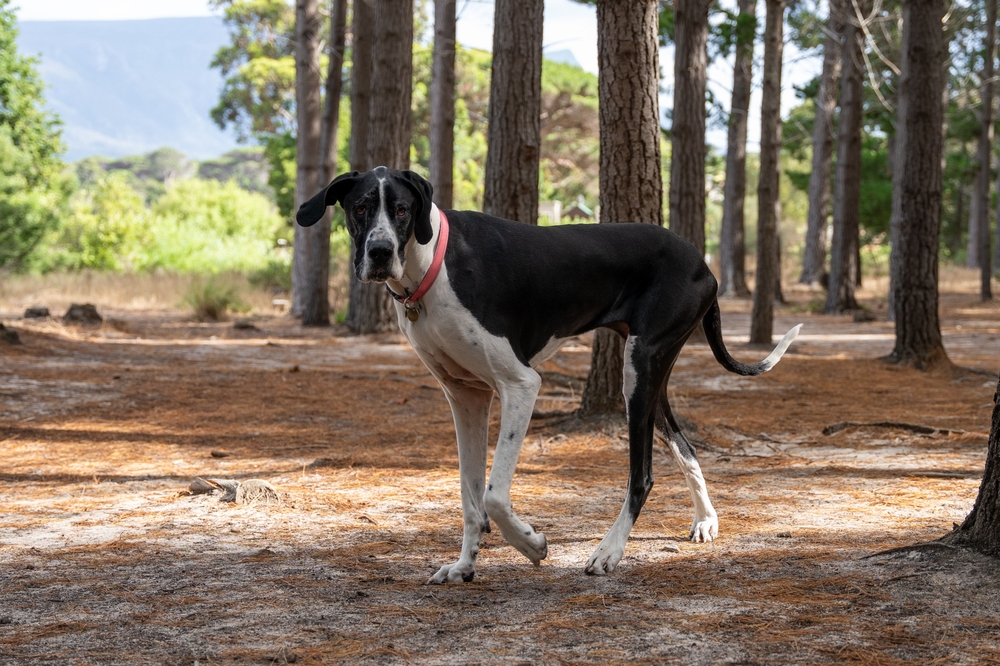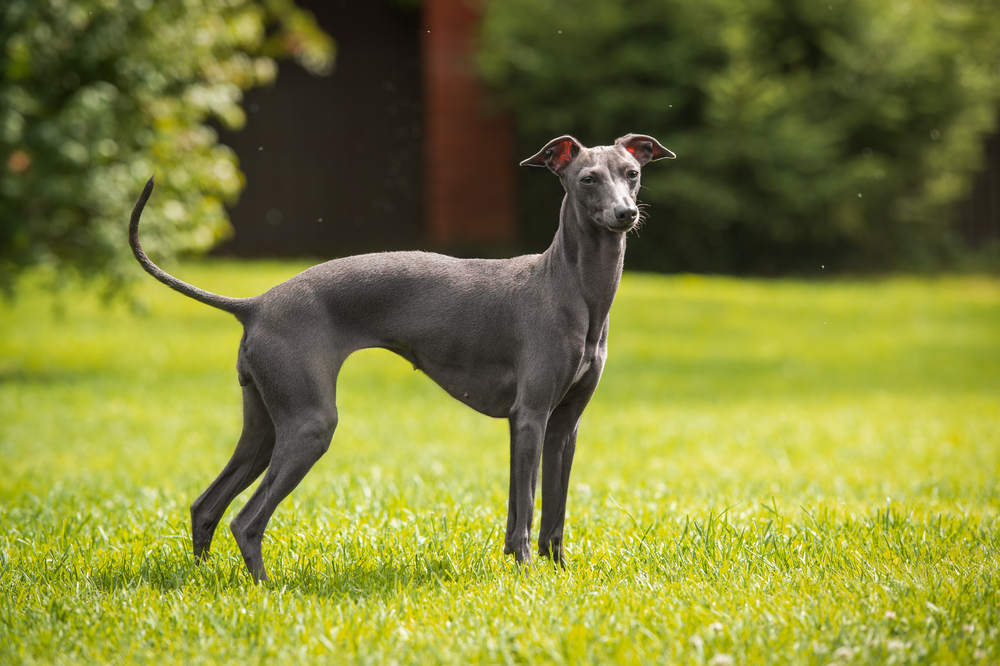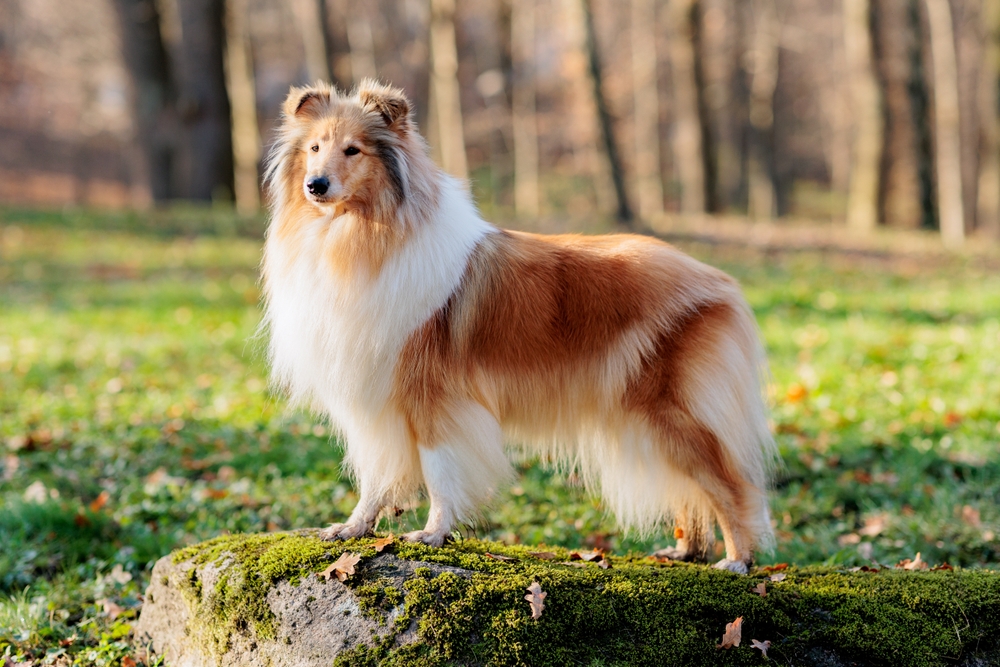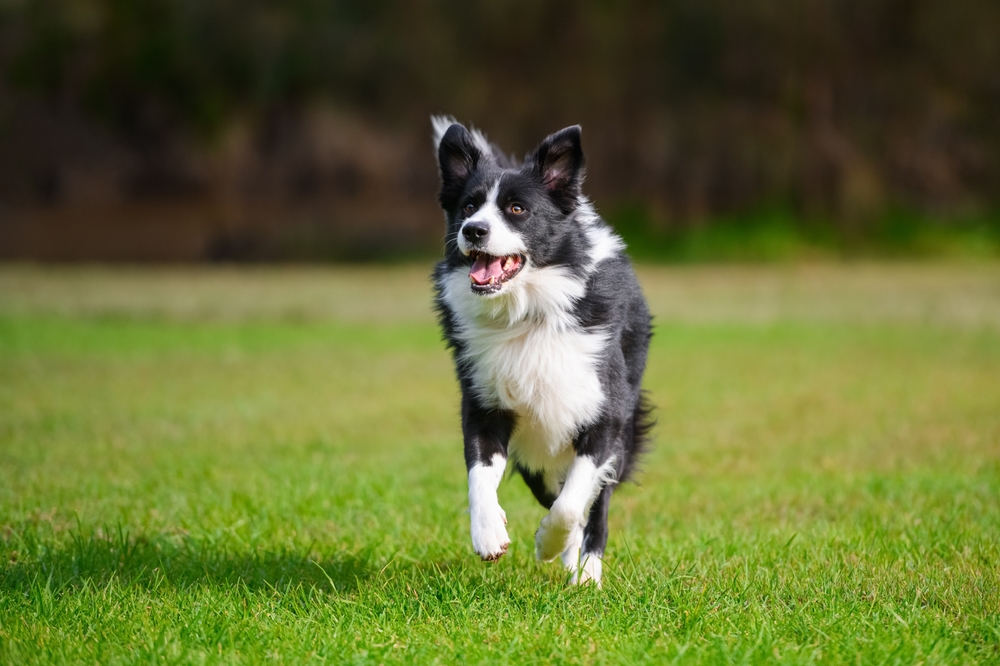The Labrador Retriever’s closest relatives are other retriever breeds, particularly the Golden Retriever and Flat-Coated Retriever. They also share ancestry with the Newfoundland Dog and the now-extinct St. John’s Water Dog, which contributed to their water-retrieving abilities and friendly temperament.
About
The Labrador Retriever is one of the world’s most popular and versatile dog breeds, cherished for its friendly temperament, intelligence, and adaptability. Originating in Newfoundland, Canada, in the 19th century, the breed was developed from St. John’s water dogs and refined in England to excel in retrieving game from both land and water. The Labrador Retriever’s scientific name is Canis lupus familiaris, and it belongs to the family Canidae.
Medium-to-large in size, Labrador Retrievers typically stand 21.5–24.5 inches (55–62 cm) at the shoulder and weigh 55–80 pounds (25–36 kg). They have a sturdy, athletic build with a broad head, strong neck, and deep chest. Their short, dense, water-resistant double coat comes in three primary colors—black, yellow, and chocolate—and is paired with a thick “otter” tail that aids in swimming. Their kind, intelligent eyes and warm expression reflect their gentle nature.
Labradors are known for their outgoing, loyal, and eager-to-please personalities. They excel as family companions, service and therapy dogs, search-and-rescue workers, and skilled hunting partners. Their intelligence and trainability make them standouts in obedience and canine sports, while their playful, affectionate demeanor ensures strong bonds with their families.
These dogs require regular exercise to channel their high energy and maintain a healthy weight, as they can be prone to obesity. Swimming, fetching, and hiking are favorite activities. Labradors are generally good with children, other pets, and strangers, making them one of the most well-rounded breeds for active households.
With their combination of work ethic, versatility, and joyful spirit, Labrador Retrievers continue to be a top choice for families and professionals alike.
Physical Characteristics
Labrador Retrievers are medium-to-large sporting dogs known for their athletic build, friendly expression, and strong swimming ability:
Coat:
They have a short, dense, and straight double coat with a soft, weather-resistant undercoat. The outer coat is slightly oily to the touch, providing insulation in cold water. Coat colors include solid black, yellow (ranging from pale cream to fox red), and chocolate.
Face:
Labradors have a broad head with a pronounced stop, a wide, strong muzzle, and a large black or brown nose (matching coat color). Their medium-sized, expressive eyes are brown or hazel, conveying intelligence and kindness. Ears are pendant-shaped, set slightly above eye level, and hang close to the head.
Body:
They have a sturdy, well-balanced build with a deep chest, strong back, and muscular neck. Their frame is powerful yet agile, built for retrieving game on land and in water.
Tail:
The distinctive “otter tail” is thick at the base, tapers toward the tip, and is covered in dense, short hair. It acts as a rudder while swimming.
Size:
-
Length (Body): Approximately 30 to 36 in (76 to 91 cm) from chest to rump.
-
Shoulder Height:
-
Males: 22.5 to 24.5 in (57 to 62 cm)
-
Females: 21.5 to 23.5 in (55 to 60 cm)
-
Weight:
-
Adult Female: 55 to 70 lbs (25 to 32 kg)
-
Adult Male: 65 to 80 lbs (29 to 36 kg)
Labrador Retrievers’ physical characteristics combine strength, stamina, and water-adapted features, making them exceptional hunting companions, versatile working dogs, and affectionate family pets.
Reproduction
The reproductive cycle of Labrador Retrievers follows the general domestic dog pattern, with emphasis on maintaining genetic health and sound temperament:
1. Mating and Courtship:
Labrador Retrievers typically reach sexual maturity between 6 and 9 months, but responsible breeders wait until females are at least 18–24 months old and males are fully matured. Courtship often involves playful interaction, scent-marking, and social bonding before mating.
2. Estrus Cycle:
Females generally come into heat twice a year, with each cycle lasting about 2–3 weeks. The optimal breeding period is usually between days 9–14 of the cycle, though ovulation timing can vary.
3. Gestation:
The gestation period averages 63 days (about 9 weeks). Pregnant females benefit from a nutrient-rich diet formulated for gestation, as well as moderate exercise to maintain muscle tone and overall health.
4. Birth of Puppies:
Typical litter sizes range from 6 to 8 puppies, though litters of 4–10 are possible. Puppies are born blind and deaf, completely dependent on their mother for warmth and nutrition.
5. Care and Nurturing:
For the first 3–4 weeks, the mother nurses and cleans her puppies. Puppies open their eyes around 10–14 days and begin to walk soon afterward.
6. Weaning and Socialization:
Weaning begins at about 4 weeks, with gradual introduction to high-quality puppy food while reducing nursing sessions. Early socialization between 4–12 weeks is crucial for Labradors, as they are intelligent, active, and eager-to-please dogs that benefit from positive exposure to people, other animals, and various environments.
7. Independence:
By 8–10 weeks, puppies are generally ready for rehoming, though some breeders keep them until 12 weeks for further development and health monitoring.
Because Labradors can be prone to hip and elbow dysplasia, progressive retinal atrophy (PRA), exercise-induced collapse (EIC), and certain heart conditions, responsible breeders conduct comprehensive health screenings before mating to ensure healthier, more resilient puppies.
Lifespan
Lifespan in the Home Environment:
Labrador Retrievers typically live 10 to 12 years, with some reaching 13–14 years when given excellent nutrition, consistent exercise, and preventative veterinary care.
Lifespan in Active or Working Roles:
As hunting retrievers, service dogs, or search-and-rescue workers, Labradors often maintain peak physical condition for many years. However, the physical demands of working life can increase joint wear and the risk of injuries. With proper conditioning, rest, and veterinary monitoring, their lifespan can remain comparable to that of non-working Labradors.
Common Health Factors Affecting Lifespan:
-
Hip and Elbow Dysplasia: Common in large breeds, can lead to arthritis and mobility issues.
-
Obesity: Labradors have a strong appetite, and excess weight can exacerbate joint and heart problems.
-
Progressive Retinal Atrophy (PRA): A genetic eye disease leading to vision loss.
-
Exercise-Induced Collapse (EIC): A condition that can cause sudden weakness after intense activity.
-
Heart Conditions: Such as tricuspid valve dysplasia.
-
Cancer: Including mast cell tumors and lymphoma.
Ways to Maximize Lifespan:
-
Maintain an ideal weight with portion-controlled feeding and daily exercise.
-
Feed a balanced diet with joint-support nutrients like glucosamine, chondroitin, and omega-3 fatty acids.
-
Schedule regular veterinary checkups, including orthopedic, cardiac, and eye screenings.
-
Provide mental stimulation through training, games, and interactive activities.
-
Avoid overexertion, especially in hot weather, as Labradors can be prone to overheating.
With attentive care, Labradors can remain active, healthy, and affectionate companions well into their senior years, maintaining the friendly, eager-to-please temperament that defines the breed.
Eating Habits
Diet:
Labrador Retrievers require a balanced, nutrient-rich diet formulated for medium-to-large active breeds. High-quality commercial kibble or fresh-prepared meals should provide lean animal protein (chicken, turkey, beef, or fish), healthy fats for sustained energy, complex carbohydrates for stamina, and essential vitamins and minerals. Joint-support nutrients such as glucosamine, chondroitin, and omega-3 fatty acids are beneficial due to the breed’s susceptibility to hip and elbow dysplasia.
Feeding Schedule:
-
Puppies (under 6 months): 3–4 small meals daily to support rapid growth and stable energy.
-
Adults: 2 evenly spaced meals daily to maintain steady energy and reduce digestive upset.
-
Seniors: 2 smaller meals daily with calorie adjustments to maintain a healthy weight and support aging joints.
Eating Behavior:
Labradors are known for their strong appetites and tendency to overeat if given the chance. This makes portion control and measured feeding essential to prevent obesity. They are often highly food-motivated, which can be used to advantage in training.
Special Considerations:
-
Weight Management: Monitor food portions carefully to avoid excess weight gain, which can worsen joint and heart conditions.
-
Bloat Prevention: While Labradors are less prone to bloat than some deep-chested breeds, feeding measured portions and avoiding intense exercise before and after meals is still good practice.
-
Food Allergies/Sensitivities: Some Labradors may have sensitivities to grains or certain proteins; limited-ingredient diets may help in these cases.
-
Activity Level Adjustments: Reduce calorie intake during periods of lower activity and increase it moderately during hunting season or active training.
Treats and Extras:
Healthy treat options include apple slices (without seeds), carrot sticks, blueberries, and green beans. Avoid high-fat, salty, or sugary snacks, and never feed toxic foods like chocolate, grapes, onions, or garlic.
A portion-controlled, high-quality diet tailored to the Labrador’s energy needs helps maintain their muscular build, joint health, and signature playful energy throughout their lives.
Uniqueness
The Labrador Retriever is one of the most popular and recognizable dog breeds in the world, known for a blend of adaptability, athleticism, and an affectionate nature:
Versatile Working Ability:
Originally bred in Newfoundland and refined in England, Labradors excel in retrieving game from both land and water. Today, they are equally skilled in hunting, service work, search-and-rescue, and detection roles.
Water-Adapted Features:
Their dense, water-resistant double coat, thick “otter tail,” and webbed feet make them exceptional swimmers, capable of working in cold and rough waters.
Friendly and Eager-to-Please Temperament:
Labradors are famously good-natured, making them excellent family pets, therapy dogs, and companions for children.
Highly Trainable:
Their intelligence, combined with their strong food motivation, allows them to excel in obedience, agility, and specialized training programs.
Balanced Athletic Build:
Labradors are muscular yet agile, allowing them to work long days in the field without tiring, while still being active playmates at home.
Global Popularity:
For decades, Labradors have ranked among the most registered and recognized breeds worldwide, due to their reliability, adaptability, and affectionate personality.
Gentle Mouth:
True to their retriever heritage, Labradors can carry delicate objects—such as game birds or even raw eggs—without damage, a trait highly valued in hunting dogs.
The Labrador Retriever’s combination of working skill, friendliness, adaptability, and natural athleticism makes it one of the most respected, beloved, and trusted dog breeds in the world.
Be the First to Share Photos of This Species.
FAQ’s
1. What is the closest species to the Labrador Retriever?
2. How does the Labrador Retriever compare to other breeds?
Labradors are more versatile and water-oriented than many sporting breeds, combining strong retrieving instincts with a highly adaptable personality. Compared to the Golden Retriever, they have a shorter coat and require less grooming, while still excelling in hunting, service, and family roles. Their friendly, non-aggressive temperament makes them less territorial than many working dogs, but equally reliable as companions and field partners.
3. What national parks provide the best chances to see a Labrador Retriever?
Labradors are a domesticated breed and not found in the wild, but they are often spotted in dog-friendly national and state parks where leashed pets are welcome, such as:
-
Cuyahoga Valley National Park (Ohio) – Several trails, including the Towpath Trail, allow leashed dogs.
-
Pictured Rocks National Lakeshore (Michigan) – Offers pet-friendly trails and shoreline areas with access to Lake Superior.
-
Valley of Fire State Park (Nevada) – Scenic trails and rock formations where leashed dogs are permitted.
Because of their love of water and outdoor activity, Labradors are especially common in parks with lakes, rivers, and open hiking trails, where they can enjoy swimming and retrieving alongside their owners.




































































